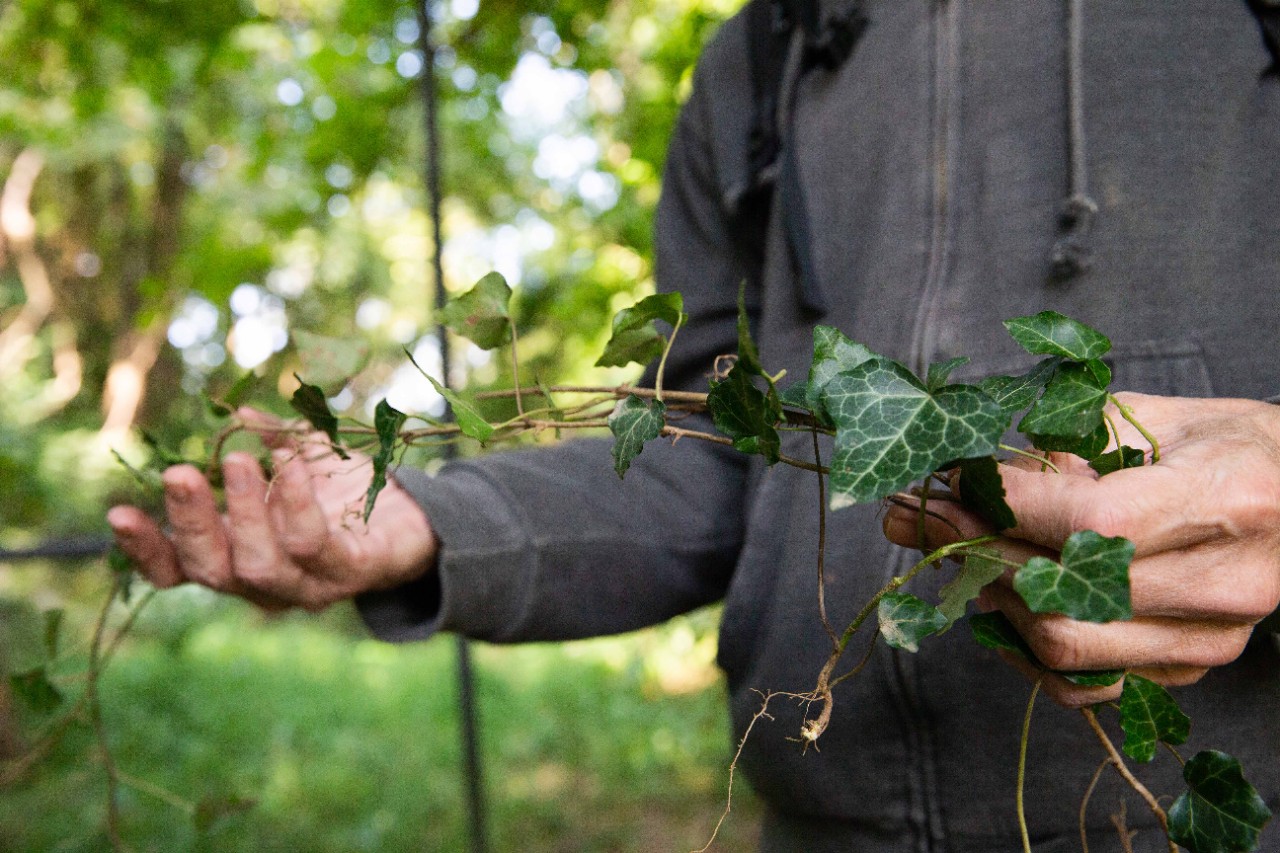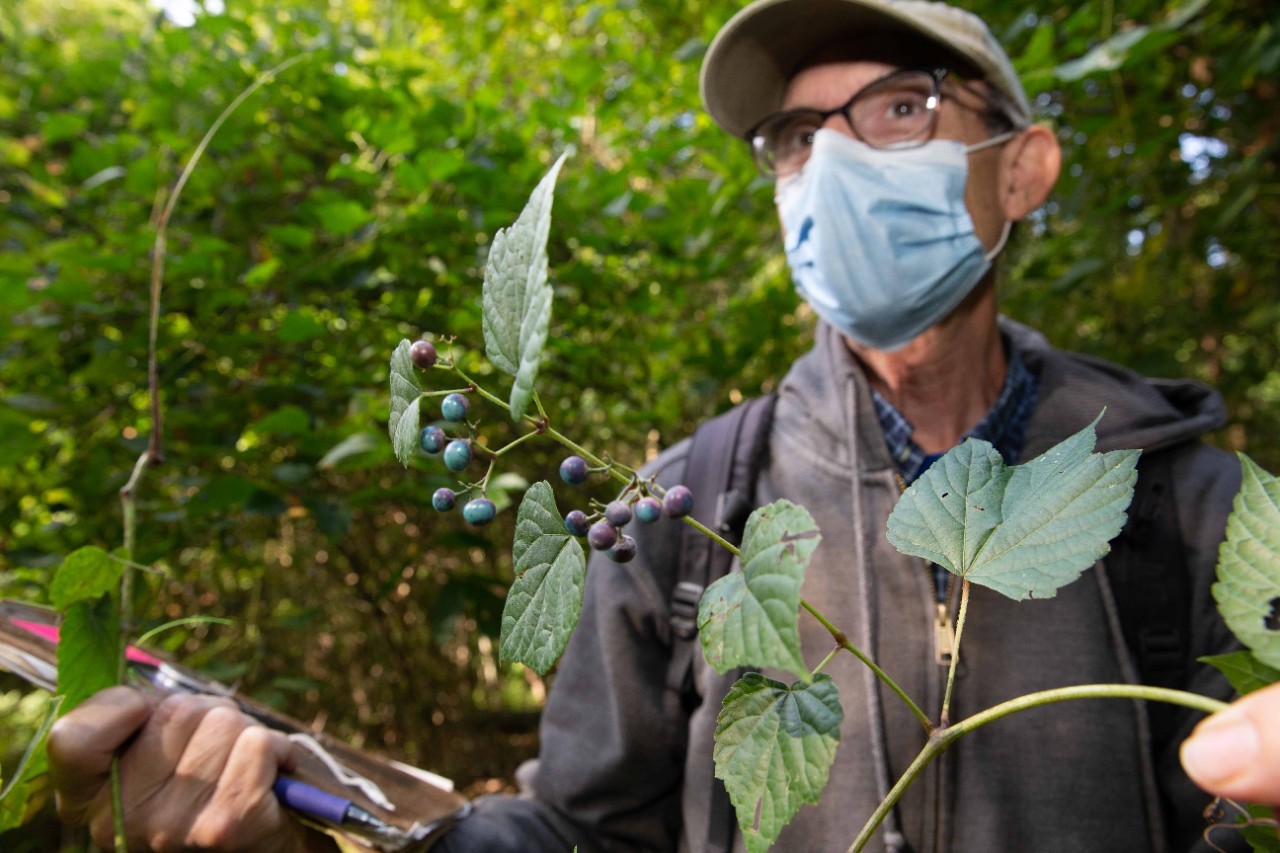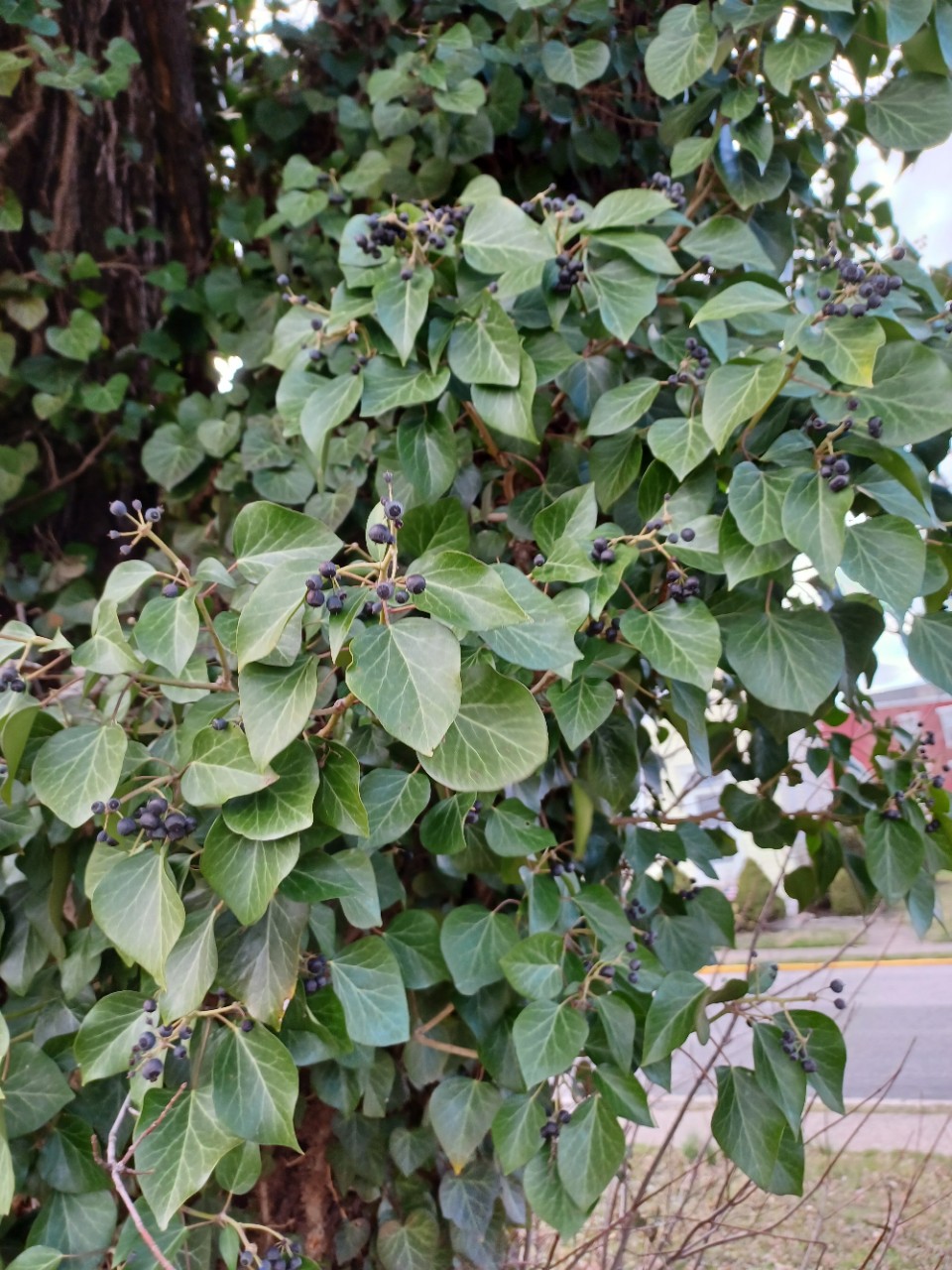
Invasive species are taking over Ohio forests
UC plant survey finds dozens of nonnative invasive species thriving in southwest Ohio
A new botanical survey of southwest Ohio found that invasive species introduced to the United States over the past century are crowding out many native plants.
Biologists from the University of Cincinnati are retracing two exhaustive surveys conducted 100 years apart to see how the Queen City’s plant diversity has changed over the past two centuries. They focused their attention on undeveloped parts of cemeteries, banks of the Mill Creek and public parks that have remained protected from development during the last 200 years.
The study, titled “The rise of nonnative plants in wooded natural areas in southwestern Ohio,” was published as an open-access article in the journal Ecological Restoration.
Learn more about nature
UC professor Denis Conover leads weekly interpretive nature walks at 2:30 p.m. Sundays at Burnet Woods.

UC biology professor Denis Conover holds porcelainberry, one of dozens of invasive, nonnative species found during a new plant survey in southwest Ohio. Photo/Lisa Ventre/UC Marketing + Brand
Lucy Braun's legacy
UC’s latest survey follows in the footsteps of Cincinnati botanist Thomas G. Lea, who conducted a plant survey in Cincinnati between 1834 and 1844. During that time, he built up an herbarium of specimens that went to the Academy of Natural Sciences in Philadelphia. Lea identified some 714 species before he died in 1844. His work was published posthumously in 1849 by his brother.
A century later, famed UC botanist E. Lucy Braun retraced Lea’s path, conducting a second plant survey in Cincinnati that found more than 1,400 species in her 1934 study published in The American Midland Naturalist. She leaned on Lea’s meticulous notes to return to the places he visited, many of which had been developed into homes, roads or apartment buildings over the decades.
UC biologist Denis Conover and his co-author Robert Bergstein retraced the steps of Braun and Lea in southwest Ohio in places where city development did not pave over natural areas. They found that many species purposely introduced as landscaping plants are flourishing in the wild.
“The spread of nonnative invasive species into wooded natural areas in southwestern Ohio threatens the continued survival of native flora and fauna. Efforts by park managers and volunteers to control invasive plant species has become a major part of their duties. This effort will be required in perpetuity and will be at great expense both monetarily and timewise due to collateral damage to native plants, wildlife and humans caused by the extensive use of herbicides, chainsaws and other mechanical equipment,” the study concluded.
Native plants just don’t have a chance. Everything that depends on the native plants — insects, birds — can be lost.
Denis Conover, UC biology professor
Horticulturists introduced most of the nonnative plants from Europe and Asia as ornamentals. Their seeds eventually spread in the wild.
The biggest culprit? Amur honeysuckle, a woody shrub that has taken over many eastern forests.
“It has escaped into the wild and is propagating on its own,” said Conover, a professor of biology in UC’s College of Arts and Sciences.
Not to be confused with native trumpet honeysuckle, which grows in southern states and is referenced in the works of American writers William Faulkner and Robert Frost, Amur honeysuckle is a shrub from Asia that has delicate white flowers in the spring and red berries in the fall.
“Amur honeysuckle is now the most abundant woody plant in Hamilton County,” he said. “One bush can produce thousands of seeds that get dispersed by birds and mammals.”

UC biology professor Denis Conover said many nonnative and invasive plants spreading in woods were planted as ornamentals. Photo/Michael Miller
Improving biodiversity
A survey by Braun in 1961 found Amur honeysuckle starting to grow in some parts of Hamilton County but not yet spreading in the wild in other Ohio counties. Today, it is a dominant woody plant found ubiquitously throughout the state, crowding out virtually all other low-lying vegetation, the study found.
“In some woodlands, the Amur honeysuckle layer is so dense that the only native species remaining are older trees whose canopy is already growing above the shrub layer,” the study said.

English ivy. Photo/Denis Conover
“It leafs out before native woody plants and holds its leaves longer into the fall,” Conover said.
Some invasive plants are successful because they produce chemicals that hinder the growth or germination of nearby competitors, an insidious weapon called allelopathy, he said.
Conover said where these introduced plants are found, there is often far less biodiversity to support wildlife and the food chain. Once they take hold, eradicating plants like Amur honeysuckle is labor-intensive, expensive and time consuming.
“Native plants just don’t have a chance. Everything that depends on the native plants — insects, birds — can be lost,” Conover said. “When they introduce nonnative plants to the United States, they can also import fungal diseases that can wipe out native trees, which is what happened with the American chestnut.”
Callery pear trees with their pretty spring flowers and quick growing times were a favorite tree to plant in front yards of new subdivisions. Today, they grow wild along highways and forests.
Ohio lawmakers plan to phase in a ban on the sale of Callery pear trees in 2023.

UC biologist Denis Conover identifies invasive, nonnative plants at Spring Grove Cemetery. Photo/Lisa Ventre/UC Marketing + Brand
Tracking spread of invasives
The UC survey found dozens of other examples of foreign species that have taken root in southwest Ohio’s woods:
- Winter creeper and English ivy are ground cover commonly planted in gardens, college campuses and cemeteries.
- White mulberry was introduced to the United States in colonial times to feed silkworms. Today, it takes over disturbed forest and road edges.
- Multiflora rose produces beautiful white flowers and a tangle of woody thorns that make removal particularly treacherous.
The survey found dozens of other examples, including porcelain berry, tree of heaven, winged euonymus, European buckthorn, Oriental bittersweet, common privet and lesser periwinkle. It also found Norway maple, Amur cork tree and white poplar along with herbaceous species such as lesser celandine, garlic mustard, Japanese knotweed and Japanese stilt grass.
Conover is still working on a larger plant survey comparing the vegetation today to that found in Cincinnati 100 and 200 years ago. So far, he has identified several hundred species, all of which are being added to UC’s Margaret H. Fulford Herbarium. Founded in 1927, the Fulford Herbarium is the third largest of Ohio's 17 herbaria.
Featured image at top: English ivy. Photo/Lisa Ventre/UC Marketing + Brand

UC biology professor Denis Conover leads interpretive nature walks Sundays at Burnet Woods. Photo/Provided
Next Lives Here
The University of Cincinnati is leading public urban universities into a new era of innovation and impact. Our faculty, staff and students are saving lives, changing outcomes and bending the future in our city's direction. Next Lives Here.
Related Stories
New AI tools available to UC students, faculty and staff
March 27, 2025
The University of Cincinnati recently added additional resources to its suite of supported AI tools for students, faculty, and staff.
Kentucky mom shares her colon cancer journey to save others
March 26, 2025
University of Cincinnati Cancer Center patient Patty Goering and physician researcher Tahir Latif spoke with WLWT about Goering's story of being diagnosed and treated for colon cancer at a young age.
UC Blue Ash professor combines service and adventure in trip to...
March 26, 2025
Olivia Enriquez began 2025 with a surprise request that included a trip halfway around the world to help a community in need.
